Current courses
- X Summer 2024: Iudaea capta? The Great Jewish Rebellion and the Foundation of the Flavian Dynasty (Bamberg)
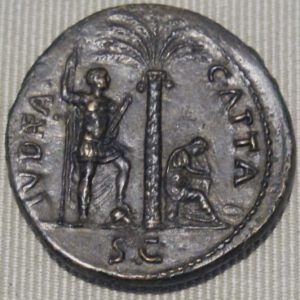
The Great Jewish Rebellion (66–73 AD) was a major conflict in Roman history, which not only shaped the future of the province of Iudaea, but also Roman politics and society. This course will take an in-depth look at the causes, course and consequences of the rebellion, which led, among other things, to the destruction of the Herodian Temple in Jerusalem and the establishment of the Flavian Dynasty.
In the course of the seminar, we will examine the political, social and religious tensions that led to the outbreak of the rebellion, as well as the military strategies and tactics of the Roman and Jewish forces. A particular focus will be on the groups involved, key events such as the conquest of Jerusalem or the siege of Masada and the propaganda of the Flavian dynasty.The course also provides a general introduction to the working methods and auxiliary sciences of Ancient History.
- XI Summer 2024: Introduction to the Study of History (III) (Bamberg)
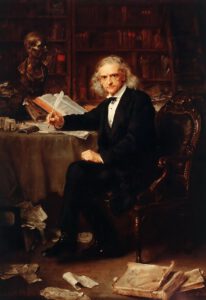
This introductory course must be taken as part of the introductory module. It provides a systematic introduction to important working techniques, theories and methods of studying history. This includes an introduction to the most important general resources as well as practising the use of bibliographies, sources, internet resources and specialised literature.
- XII Summer 2024: The reception of Rome in 19th century Bavaria: The Pompejanum in Aschaffenburg (Bamberg)
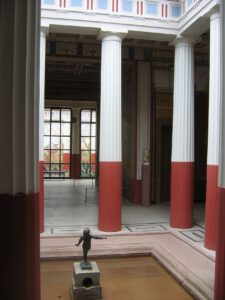 Our destination is the Pompejanum in Aschaffenburg, a fascinating example of the reception of Rome in 19th century Bavaria. The monument, which was commissioned by Ludwig I, is an idealised replica of a Roman villa in Pompeii. We will look at the architectural and cultural aspects represented by the Pompejanum and explore the question of how antiquity was interpreted and idealised in the 19th century.
Our destination is the Pompejanum in Aschaffenburg, a fascinating example of the reception of Rome in 19th century Bavaria. The monument, which was commissioned by Ludwig I, is an idealised replica of a Roman villa in Pompeii. We will look at the architectural and cultural aspects represented by the Pompejanum and explore the question of how antiquity was interpreted and idealised in the 19th century.
[Univis] [VC]
Winter 2024/25
- XIII AI and Classics reloaded
- XIV Caesar’s dictatorship
- XV Introduction to the Study of History (IV)
Past courses

Despite his short reign, Julian, a nephew of Constantine I who is primarily known for his attempts to push back Christianity in favour of the old cults, is considered one of the most colourful rulers of the Roman Empire. Julian polarised even in antiquity: while his Christian contemporaries regarded him as an apostate, many members of the still predominantly pagan elite saw him as a beacon of promise and hope.
This ambivalence is also reflected in historical research, where he is either regarded as a restorative ruler who failed to recognise the signs of the times, or as a rediscoverer and saviour of the diversity of ancient cults, who recognised the problems that Christianity brought with it for late antique society and rule. In the course of the seminar, various political initiatives of the emperor will be discussed and evaluated on the basis of the rich literature.
The course also provides a general introduction to the working methods and auxiliary sciences of Ancient History.
 This introductory course must be taken as part of the introductory module. It provides a systematic introduction to important working techniques, theories and methods of studying history. This includes an introduction to the most important general resources as well as practising the use of bibliographies, sources, internet resources and specialised literature.
This introductory course must be taken as part of the introductory module. It provides a systematic introduction to important working techniques, theories and methods of studying history. This includes an introduction to the most important general resources as well as practising the use of bibliographies, sources, internet resources and specialised literature.
 The daily new developments that are attributed to so-called artificial intelligence are rapidly changing modern society in all areas of life and do not stop at the classical and tradition-bound ancient sciences.
The daily new developments that are attributed to so-called artificial intelligence are rapidly changing modern society in all areas of life and do not stop at the classical and tradition-bound ancient sciences.
In this exercise, new programmes and platforms are examined experimentally with regard to opportunities and problems for scientific work.
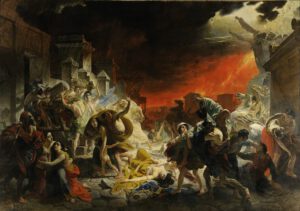 Natural disasters not only shaped the landscapes, but also the history of the Roman Empire. Volcanic eruptions, earthquakes, floods and famines had a profound impact on the population, the economy and politics.
Natural disasters not only shaped the landscapes, but also the history of the Roman Empire. Volcanic eruptions, earthquakes, floods and famines had a profound impact on the population, the economy and politics.
In this course, we will take an in-depth look at different types of natural disasters and their impact on ancient society. Historical texts, archaeological finds and modern geophysical publications will serve as a basis.
Particular attention will be paid to the reactions and coping strategies of the Roman administration, the role of religion in the interpretation of these disasters and the archaeological remains. The aim is to develop a deeper understanding of the interactions between man and nature in the context of Roman history.
The course also provides a general introduction to the working methods and auxiliary sciences of Ancient History.
 This introductory course must be taken as part of the introductory module. It provides a systematic introduction to important working techniques, theories and methods of studying history. This includes an introduction to the most important general resources as well as practising the use of bibliographies, sources, internet resources and specialised literature.
This introductory course must be taken as part of the introductory module. It provides a systematic introduction to important working techniques, theories and methods of studying history. This includes an introduction to the most important general resources as well as practising the use of bibliographies, sources, internet resources and specialised literature.
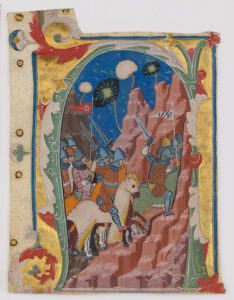 The course is an interdisciplinary cooperation with Jana Hock, Mag. Theol. from the Chair of Old Testament and Biblical-Oriental Languages.
The course is an interdisciplinary cooperation with Jana Hock, Mag. Theol. from the Chair of Old Testament and Biblical-Oriental Languages.
After the death of Alexander the Great, his great empire disintegrated and several of his commanders, the so-called Diadochi, divided the dominion among themselves. The largest of these diadochic empires in terms of area was the Seleucid Empire, which originated with Seleucus I Nicator. In this seminar we will focus on the 2nd century BCE, in particular on the Seleucid ruler Antiochus IV Epiphanes and his relationship with the province of Judea. Judeo-Seleucid relations were fraught with conflict in this era. In the context of these disputes, one group gradually gained influence in Judea: the Maccabees. Their history is recorded in the First and Second Books of Maccabees.
In this interdisciplinary course we will examine selected relevant source texts using two methodological approaches: the historical-critical and the narratological method.
The course will take place in block format. The first two sessions will be devoted to methodological and content-related introductions, while the remaining two sessions will be devoted to student presentations followed by discussion.
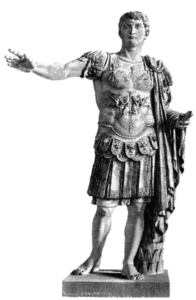 Germanicus Iulius Caesar was a member of the Julio-Claudian dynasty and the most famous general of his time. When Augustus arranged his succession in favour of Tiberius in 4 CE, this was only on the condition that he adopted Germanicus at the same time. He was thus the heir apparent to the throne.
Germanicus Iulius Caesar was a member of the Julio-Claudian dynasty and the most famous general of his time. When Augustus arranged his succession in favour of Tiberius in 4 CE, this was only on the condition that he adopted Germanicus at the same time. He was thus the heir apparent to the throne.
In 17 CE, Germanicus was recalled to Rome after a military campaign in Germania that lasted several years. There he celebrated a pompous triumph. The Roman public, who revered the heir apparent in the highest degree because of his closeness to the people, lay at their favourite’s feet. Shortly afterwards he was given a comprehensive imperium, which placed him legally above the provincial governors and only subordinate to that of Tiberius, and sent to the Orient. There he was to order the political conditions in the eastern provinces. Less than two years later, he died unexpectedly in Antioch on the Orontes. The Roman population then fell into a state of unprecedented mourning and clung to conspiracy theories surrounding the alleged murder. The suspected mastermind behind the plot was none other than the emperor himself.
The seminar offers an overview of the tradition concerning Germanicus’ stay in the Orient as well as the circumstances and consequences of his death.
The course also provides a general introduction to the research methods and auxiliary disciplines of Ancient History.
 Antioch on the Orontes was the seat of the provincial governor of Syria and the most important city in the east of the Roman Empire: as the former capital of the Seleucid Empire, it was not only a central trading hub since its incorporation into the Roman Empire by Cn. Pompeius, but also functioned as a residence city for emperors or members of the imperial family when campaigns were conducted on the eastern border of the empire.
Antioch on the Orontes was the seat of the provincial governor of Syria and the most important city in the east of the Roman Empire: as the former capital of the Seleucid Empire, it was not only a central trading hub since its incorporation into the Roman Empire by Cn. Pompeius, but also functioned as a residence city for emperors or members of the imperial family when campaigns were conducted on the eastern border of the empire.
The event will focus in particular on late antique Antioch. Late Antiquity was an age of transformation – in addition to increasing foreign policy challenges, the rapid rise of Christianity marked a turning point on the imperial level.
The seminar will focus on selected key events in the city’s history, the development of relations with imperial representation and various local groups, especially the Christian and Jewish communities.
The course will also provide a general introduction to the research methods and auxiliary disciplines of Ancient History.

 The excursion leads to the antiquities collection of the Martin von Wagner Museum in the Würzburg Residence, which houses one of the most important collections of Greek clay vases in the world.
The excursion leads to the antiquities collection of the Martin von Wagner Museum in the Würzburg Residence, which houses one of the most important collections of Greek clay vases in the world.